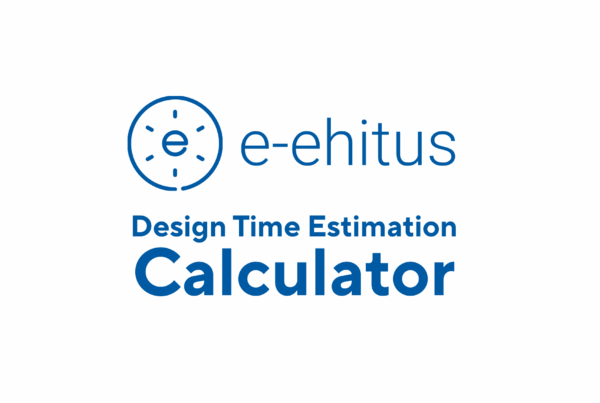The article was originally published in Äripäev Ehitusuudised.ee.
How far are we from an AI tool that can generate new ideas, models, and projects based on today’s knowledge in the construction world and also implement them in production?
Digital construction expert and CEO of Wenture, Kaur Tull, discusses the necessary steps for the functioning of such a tool.
Are data smart if they are not in use?
One important prerequisite for the efficient application of artificial intelligence in the construction sector is a large amount of high-quality data. Fortunately, they are being collected quite efficiently already. We have monitoring data, geographical data, supply chain, workforce, time and cost data, as well as building and construction project data.
At the same time, the crucial question is what we do with these data. Unfortunately, we see that these data do not always find an optimal application. One of the first steps in digitizing construction could be making the data smarter.
One of the first steps in digitizing construction could be making the data smarter.
Currently, the focus is mainly on checking whether the data comply with rules – for example, when entering projects to systems. In the future, we could instead think about how to achieve greater efficiency and innovation within the framework of these rules. To begin with, we should avoid redundant data entry, focus on training machine learning models based on the data, and predict the future based on existing information.
AI enters the construction sector gradually
The implementation of artificial intelligence doesn’t happen overnight; it has started with small solutions. Generative design has already gained a foothold in the construction industry, helping identify the optimal structure and usage of objects, such as calculating the maximum load-bearing capacity with minimal material usage.
Additionally, we notice a growing number of startups that are leveraging the possibilities of artificial intelligence in their operations. For example, Estonian company R8 forecasts and regulates indoor climate in buildings, taking into account variables like user movement, weather conditions, and even electricity prices. Nordecon collects data from construction sites to monitor and predict the progress of the construction process.
In general, there is a trend where AI is used for smaller tasks, such as generating reports and visualizing data. Therefore, there’s no need to expect a sudden revolution, but rather, it’s essential to keep a constant watch because AI is gradually integrating into our workflows through various smaller developments.
In general, there is a trend where AI is used for smaller tasks, such as generating reports and visualizing data. Therefore, there’s no need to expect a sudden revolution.
The foot must know what the hand is doing
When a sufficient amount of data has been collected and automated components created, the question arises: can these components be interconnected?
For example, one could consider connecting data when planning a building. Local authorities have already determined how much of the plot can be occupied by construction and what the maximum height of the building is. This information could be combined with data on the movement of the sun and surface conditions. If you add your preferences regarding the size and style of the building solution, AI could soon provide various optimal site plans and architectural designs for the building.
Soon, AI could provide various optimal site plans and architectural designs for the building.
To ensure that the AI revolution in construction does not lag behind other sectors, it is essential for various government agencies, private sector representatives, and other data custodians to collaborate intensively. Only by moving in unison can a new comprehensive picture be created.
Modular construction promotes adaptation of AI
The integration of AI into the construction sector is by no means an easy task. One of the major obstacles to this process is the entrenchment of old dogmas. The construction sector is traditional and often inefficient, and introducing new technologies and AI can prove to be a challenge. It goes beyond just adopting new software solutions; it requires a comprehensive approach to the entire construction process. How can we innovatively use existing data? What new areas of work should be created, and which ones should we abandon?
Fortunately, changes are already taking place in the construction sector, creating favorable conditions for the implementation of artificial intelligence. One such significant change is the increasing use of modular construction. An increasing portion of buildings is constructed in controlled environments and using standardized methods. This, in turn, makes the application of artificial intelligence easier and more efficient compared to traditional construction sites.
Fortunately, changes are already taking place in the construction sector, creating favorable conditions for the implementation of artificial intelligence. One such significant change is the increasing use of modular construction.
The possibilities and relevance of using artificial intelligence continue to grow. Even if people are not yet fully ready to embrace new technologies, rising material costs and high factory space prices demand a shift towards optimization. This compels the construction sector to seek new ways to build more efficiently and use resources more effectively. In this context, the role of artificial intelligence becomes even more crucial, helping construction companies monitor, predict, and optimize their operations to achieve better results at lower costs.
Will AI build the homes of the future?
Certainly, in the future, it will be possible to assign more tasks to AI. In the near future, digitization could evolve to a point where the software’s role is not just to verify data compliance with specific rules but to provide new and more optimal architectural solutions itself. For instance, we could tell a chatbot, “Create a coat rack on my foyer wall and 3D print it.” It’s not far-fetched to imagine a time when AI can generate functional small-scale building projects with minimal human intervention.
It’s not far-fetched to imagine a time when AI can generate functional small-scale building projects with minimal human intervention.
It is clear that AI does not currently replace an architect or designer. Expertise and the ability to manage, control, and ask the right questions of AI still remain in the hands of the human expert. AI is more of a tool that accelerates the work of professionals in the construction industry. Seeing how rapidly AI is advancing, one can only hope that the construction sector keeps pace with this race.





